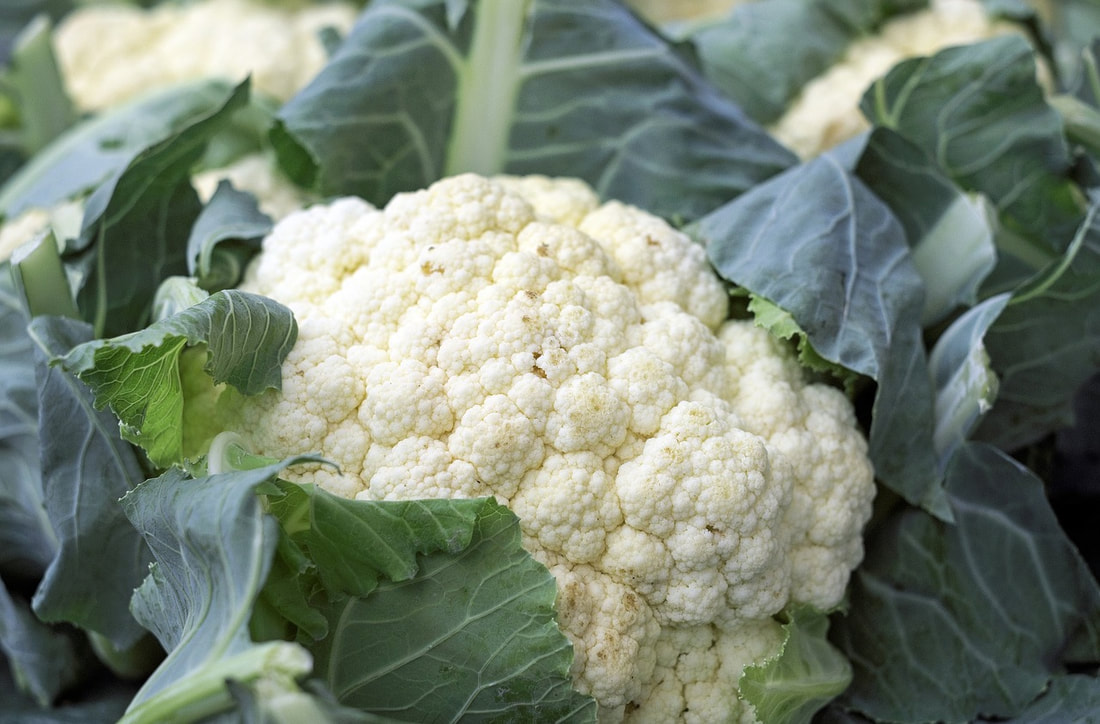|
Cauliflower has had a resurgence in popularity in the last few years, and for good reason. It offers a host of nutritional benefits for Polycystic Ovarian Syndrome (PCOS) and diabetes. As a dietitian, I see a lot of surprised faces when I encourage my clients to include cauliflower in their diets. The old phrase, "Don't eat anything white," deterred them from regularly consuming it. Thankfully, the evidence is clear that cauliflower is in fact healthful and can actually provide beneficial nutrients, despite it's color.
Let's take a closer look at cauliflower's nutrient profile. It's classified as a cruciferous vegetable, so has similar nutrients to other vegetables in this group, like broccoli, asparagus, and Brussels sprouts. In every 1 cup of raw cauliflower, there are 28 calories, 2 grams of protein, 5 grams of carbohydrate, and 0 grams of fat. Keep in mind, the carbohydrates in cauliflower are extremely low on the glycemic index, thanks to the 2 grams of fiber it contains. That means it will not cause a significant blood sugar rise or insulin increase. This makes cauliflower a filling and safe side dish for people who are trying to lose weight and control PCOS symptoms. Various vitamins and minerals in cauliflower add to it's functionality. Vitamin C, an antioxidant, is abundant in cauliflower - 53 mg per cup, to be exact. That's 71% of the recommended dietary allowance for adult women. Vitamin C is not only an anti-cancer antioxidant, it's also necessary for collagen biosynthesis and skin health. Folate, which prevents neural tube defects and is involved in brain health, is also provided by cauliflower. The phytonutrients in cauliflower are anti-inflammatory, so can play a role in treating inflammatory conditions like PCOS, cardiovascular disease, and diabetes. The flavor of cauliflower, or lack thereof, is sometimes a barrier to eating it often, but there are several ways to make it more flavorful. Roasting cauliflower with garlic and tossing it with lemon juice and parsley brings out the natural sweetness in the vegetable. Adding sauces or pesto can also make cauliflower more appealing. Additionally, riced cauliflower is becoming popular. By chopping it finely and steaming it for a few minutes, it's a great way to reduce your carbohydrate intake and eat smaller portions of rice. Check out my recipe below for simple cauliflower rice. Simple Cauliflower Rice Ingredients 1 head of cauliflower, leaves removed 1/4 cup water salt and pepper to taste Directions Cut the head of cauliflower into 4-6 smaller pieces. Place in a blender or food processor (may need to be done in two batches). Blend or chop until the cauliflower resembles the consistency of rice. This will take about 5-10 seconds. Place the cauliflower in a large saute pan with the water. Cook over medium high heat for about 5 minutes, or until softened. Season to taste with sea salt and pepper. Optional flavor add-ins: lime juice and cilantro.
7 Comments
|


 RSS Feed
RSS Feed